24 Hours Hotline: +86 137-3541-1378
Email:[email protected]
24 Hours Hotline: +86 137-3541-1378
Email:[email protected]
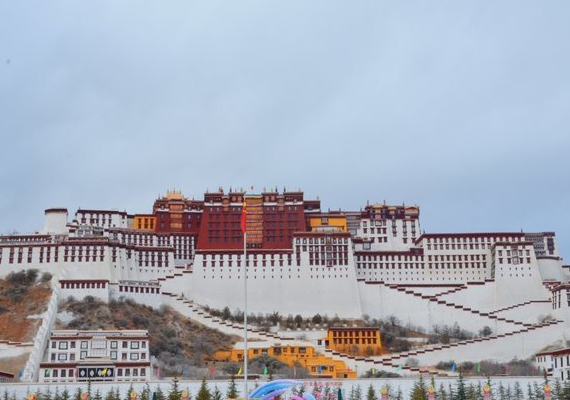
Overview of Lhasa
Lhasa
(or the "ground of the Gods") has been the capital city of Tibet
Autonomous Region since the 7th Century when Songsten Gampo built his
palace where the Potala now stands and attempted to unify the various
clans fighting in the area.
This is
the first stop for most visitors to Tibet and, although the journey here
is not as exciting as it once was, a trip here is still an essential
part of any visit to Tibet. Although Lhasa is famous for being one of
the highest cities in the world, a towering 3,600 meters above the banks
of the Lhasa River, what really knocks you out here is the full scale
impact on your senses of the breathtaking beauty, unique landscape and
the holy atmosphere of this religious center.
Background
Lhasa literally means "place of the gods".
Ancient Tibetan documents and inscriptions demonstrate that the place
was called Rasa, which either meant "goats' place", or, as a contraction
of rawe sa, a "place surrounded by a wall," or 'enclosure', suggesting
that the site was originally a hunting preserve within the royal
residence on Marpori Hill. Lhasa is first recorded as the name,
referring to the area's temple of Jowo, in a treaty drawn up between
China and Tibet in 822 C.E
Lhasa Local Features
Religious Center
Lhasa
is officially the capital city of the Tibetan Autonomous Region and the
political, economic and cultural center of Tibet. But all these come
second to the important role that Lhasa plays as the religious center of
the Tibetan world. A throng of pilgrims from all directions arrive
here, kowtowing towards Lhasa every three steps, towards their life long
destination of the golden roof of the Jokhang Temple. A glimpse of
these people allows for an understanding of the importance that Lhasa
holds in the heart of the Tibetan people.
Three
out of the six most important Tibetan Buddhist Monasteries are in
Lhasa. Almost one third of Tibetan Lamas practice and live in Lhasa,
home to some of the world's richest religious relics. These facts alone
cannot sufficiently illustrate the importance of the city in religious
terms. Only by exposing oneself to the sophisticated and well
established religious atmosphere of Lhasa can you truly understand the
existence and the everlasting spirit of the Tibetan people.
The City of the Sun
Mixed
with the fragrant smoke from yak butter candles lit throughout the
temples and households of this holy city, the dazzling sunshine in Lhasa
adds to the religious holiness of this Buddhist center. Under the
brilliant sun, the gold gilded roofs of the temples shine under the
clear blue sky. The green fields, black yak cattle and white snow-capped
mountains within sight all help to make this is a wonderfully
picturesque spot.
Although not
officially the highest point in Tibet, 3700m-high-Lhasa is probably the
closest spot to the holy Buddhist world and the city enjoys 3000 hours
of sunshine a year. In all seasons, there is hardly a cloud in the sky
and, even when it rains, this rarely lasts for long. Sunshine and clear
blue sky are guaranteed gifts for visitors to this city.
However, visitors should be aware of the dangers involved in sunbathing here. make sure you carry plenty of drinking water, sunglasses and sun block at all times.
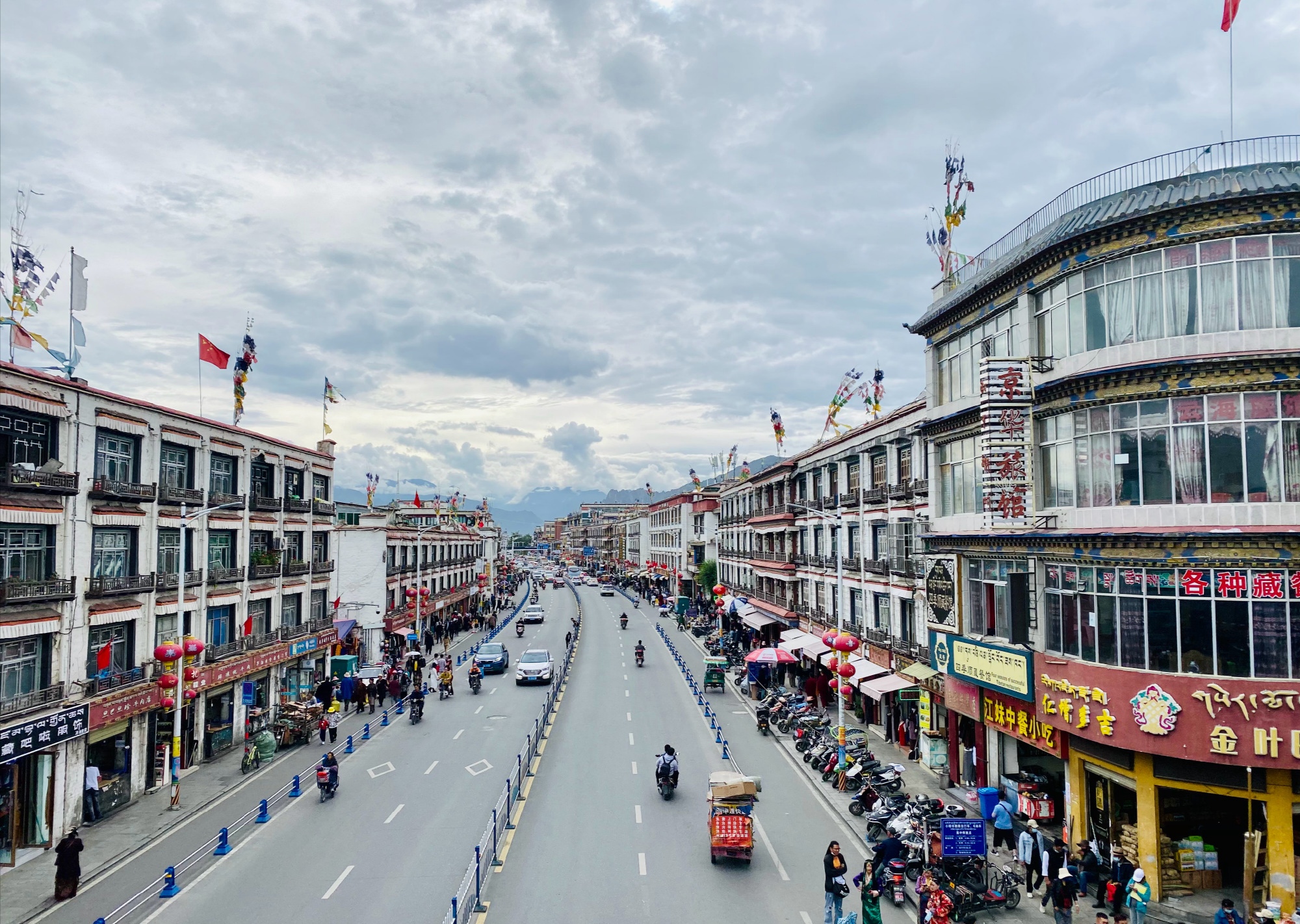
Geography:
Location: Asia, north of India, located on the Tibetan Plateau, the world's highest region.
Area: 1.2m sq km (471 700 sq miles), Bod: 2.5 million sq. km, approximately the size of Western Europe.
Terrain: 70% Grassland; from high plateau to tropical forest
Climate:
Average temperture 28 degrees Celsius (Summer) -15 degrees Celsius (in
Winter), extremely dry except during rainy season (July-August). Click
here to know the best time to visit Tibet.
Climate & Weather
Lhasa
is situated close to the border of Nepal and China, on the northern
flanks of the Himalayas and 3,600 meters from the banks of the Lhasa
River. This area is fairly inaccessible for tourists between December
and January due to the heavy snowfall and poor weather conditions.
August
is the rainy season here when landslides are common. The hottest month
here is June, with high temperatures of 22 degrees C. The sun here can
be very strong too, so make sure you take plenty of sunblock and a hat
to protect from the harsh rays.
Lhasa cuisine
Mashed Yak Meat
Mashed yak meat is a mixture of some Tibetan medicine and mashed raw beef (yak meat)?
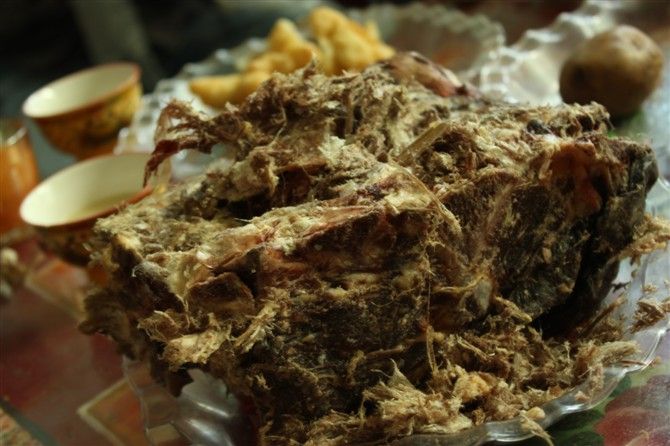
Blood Sausage
Blood
sausage is made of yak's and sheep's blood, which is very popular among
Tibetan. Most Chinese visitors will be fond of it but for Christian
foreigners, blood sausage won't be added on their menu.

Butter Tea
Butter
Tea is the main drink in Tibetan’s daily life, made from butter, brick
tea and salt. People of the Zang nationality have the habit of drinking
it, which is said to help digestion. The hospitable Tibetan welcomes
their guests with Butter tea, and it is impolite to refuse it. The Tea
Party has been running through all kinds of klatch.
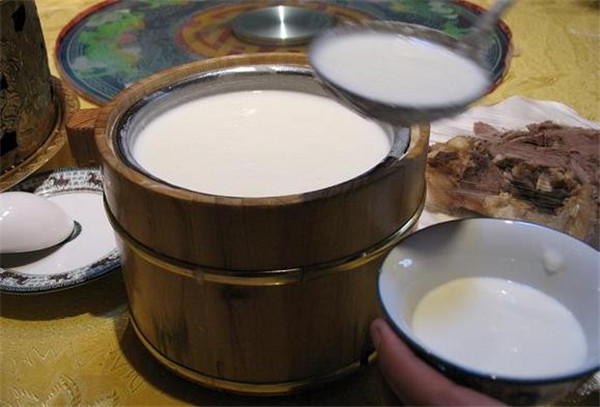
Tsampa
Tsampa
or Tsamba is a Tibetan and Himalayan Nepalese staple foodstuff,
particularly prominent in the central part of the region. It is roasted
flour, usually barley flour and sometimes also wheat flour. It is
usually mixed with the salty Tibetan butter tea.
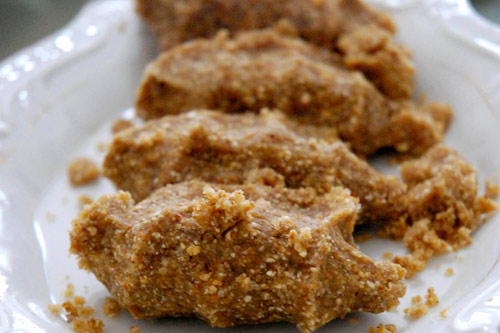
Lhasa Attractions
Potala Palace
The
Potala Palace in Lhasa, Tibet Autonomous Region was the residence of
the Dalai Lama until the 14th Dalai Lama fled to India during the 1959
Tibetan uprising. It is now a museum and World Heritage Site.
The building measures 400 metres east-west and 350 metres north-south, with sloping stone walls averaging 3 m. thick, and 5 m. (more than 16 ft) thick at the base, and with copper poured into the foundations to help proof it against earthquakes. Thirteen stories of buildings—containing over 1,000 rooms, 10,000 shrines and about 200,000 statues—soar 117 metres (384 ft) on top of Marpo Ri, the "Red Hill", rising more than 300 m (about 1,000 ft) in total above the valley floor.
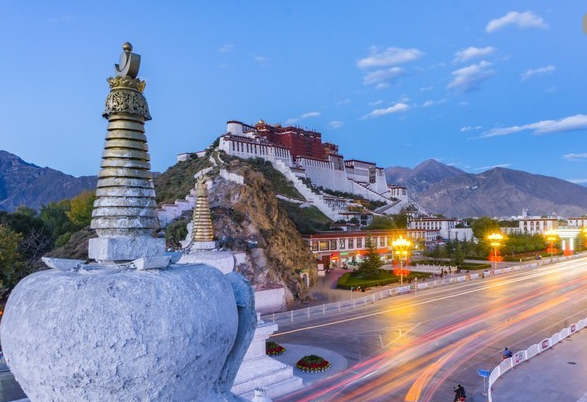
Jokhang Temple
The
Jokhang, also known as the Qoikang Monastery, Jokang, Jokhang Temple,
Jokhang Monastery and Zuglagkang, is a Buddhist temple in Barkhor Square
in Lhasa, the capital city of Tibet. Tibetans, in general, consider
this temple as the most sacred and important temple in Tibet. The temple
is currently maintained by the Gelug school, but they accept worshipers
from all sects of Buddhism. The temple's architectural style is a
mixture of Indian vihara design, Tibetan and Nepalese design.
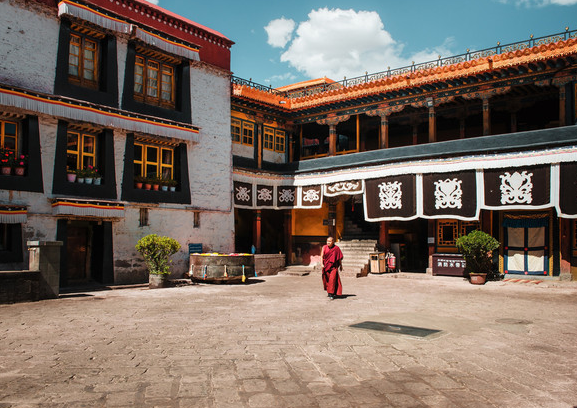
Barkhor Street
Barkhor
Street is a bustling bazaar surround Jokhang Temple. It is a place
showing the traditional outlook of Lhasa. The street was paved by
hand-polished stone boards. The centre of the street sees a huge censer.
In addition to its important place in Buddhism, Barkhor Street is also a
business centre with merchants from many different countries. The shops
here sell a great variety of goods and products, such as prayer flags,
prayer wheels, Tibetan paintings, temple bowls, clothing, accessories,
incense and Tibetan carpets.
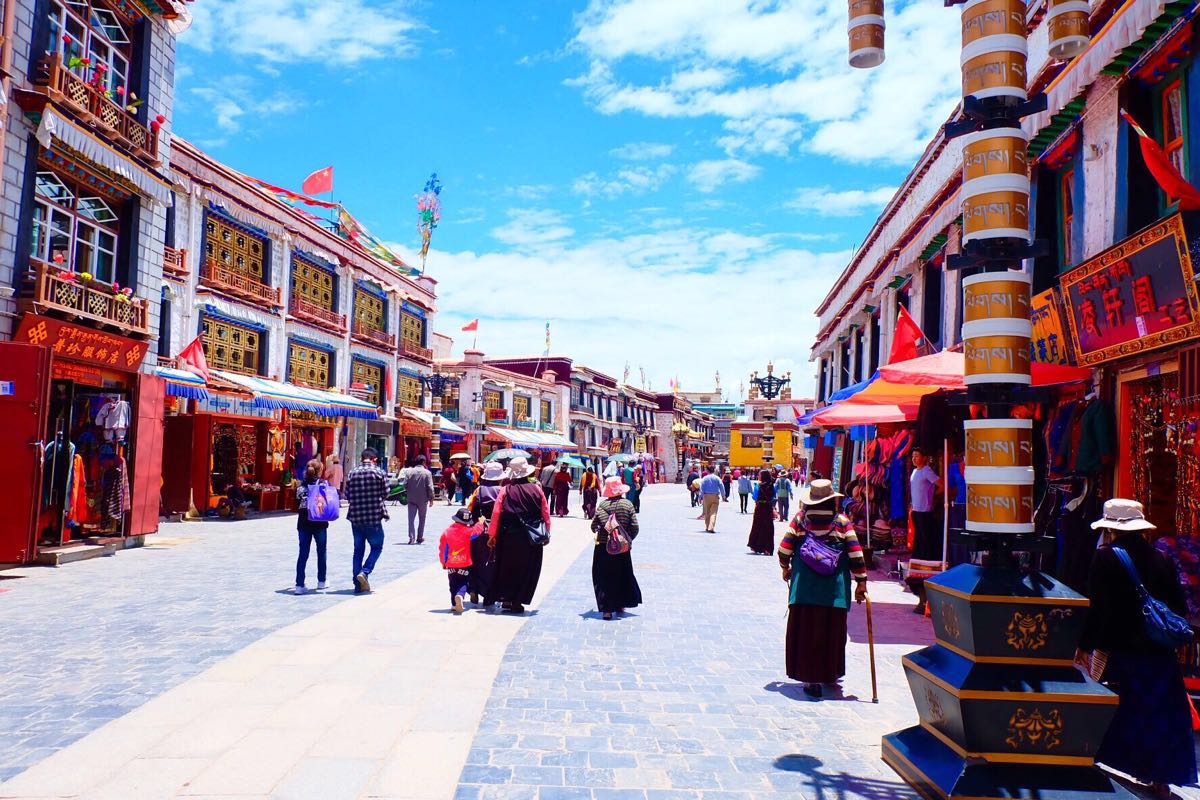
Ramoche Temple
Ramoche
Temple is a Buddhist monastery is considered the most important temple
in Lhasa after the Jokhang Temple. Situated in the northwest of the
Tibetan capital of Lhasa, it is east of the Potala and north of the
Jokhang, covering a total area of 4,000 square meters (almost one acre).
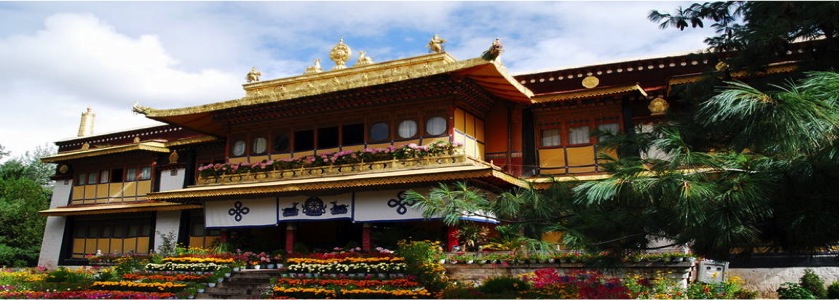
Sera Monastery
Sera
Monastery is one of the "great three" Gelug university monasteries of
Tibet, located 1.25 miles (2.01 km) north of Lhasa and about 5 km (3.1
mi) north of the Jokhang. The other two are Ganden Monastery and Drepung
Monastery. The origin of its name is attributed to a fact that the site
where the monastery was built was surrounded by wild roses in bloom.
The original Sera Monastery is responsible for some 19 hermitages,
including four nunneries, which are all located in the foot hills north
of Lhasa.
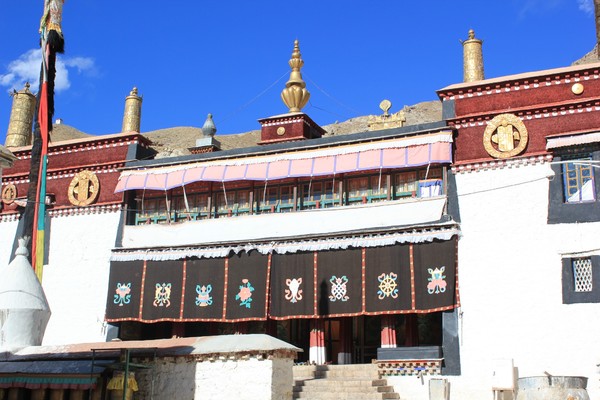
How to Get to Lhasa
Airline
Lhasa
Gongga Airport is situated in Gongga county, about 90kms south of Lhasa
City. Now there are flights to other cities in China such as Beijing,
Shanghai, Chongqing, Xian, Guangzhou, Kunming, Chengdu, from Tibet and
international flights such as to Nepal, Katmandu. There are buses
between airport and CAAC Booking Office about one hour and a half.
Railway
Lhasa
railway station is about 20kms to Potala Palace with a altitude of over
3600 meters high. Presently trains to Beijing, Chongqing, Chengdu,
Shanghai, Guangzhou, Lanzhou, and Xinin are available. In the city
center, you could take Bus No.9 to the railway station.
Highway
Lhasa
has two coach stations: Bei Jiao and Dong Jiao. Bei Jiao Station is on
No.11 Zhaji Road mainly for the long distance. The coaches to Naqu,
Rikaze, Shannan, Ali, Shangri-la, etc are available. Dong Jiao Station
is no No.3 East Jiangsu Road basically for short distance such as to
Yangbajing, Ganden Temple, Dangxiong, Songba village, Qushui and so on.
Wechat: Chinaprivatetour
24 Hours Hotline:
+86 137-3541-1378
* Authentic Experiences: Genuine local experiences that immerse you in the true essence of Shanghai and beyond.
* Safety First: Highest safety standards with secure activities and reliable transportation.
* Customizable Tours: Flexible itineraries tailored to your interests and needs.
* Local Expertise: In-depth knowledge of Shanghai and China, offering exclusive insights.
* Professional Guides: Licensed bilingual guides with over 5 years of experience.
* Comfortable Travel: Experienced drivers and well-maintained vehicles for a smooth journey.
* Sustainable Tourism: Commitment to responsible tourism and supporting local communities.
* Customer-Focused: Personalized service and continuous improvement based on your feedback.
* Free Cancellation: Cancel up to 24 hours before travel for flexibility and peace of mind.
* 24/7 Support: Round-the-clock assistance for any questions or help needed.
1 to 1 tailor-made service from our professional travel advisors for the most sophisticated
Constantly excellent reviews for attraction, hotel and service Competitive price
Local experts provide quality tours Best selected knowledgeable local guides Authentic local restaurants
7*24 hours available to create you a worry-free tour. No Hidden Fees and absolutely no pressure to buy. Secured







